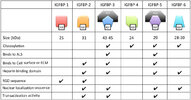BigTomJ
Member
so, in layman's terms, then for any given individual there should be some sort of "sweet spot" where aromatization promotes increased IGF1 conversion, but total estrogens are not elevated enough to significantly increase IGFBPs.Purely detrimental (in humans) since estrogens increase IGFBP-1. However, aromatization (the process of converting T to E2) increases it. So there’s a parabolic shape to the E2/curve in men (for whom all E2 is the product of T aromatization) where that plateauing is caused by E2/IGFBP-1.
that is if I'm understanding you correctly.
It seems to be that the developing consensus among some of the more science forward voices in the community, namely Kurt Havens and Todd Lee recently, that estrogen towards the upper end of the reference range or slightly outside of the RR seems to be that sweet spot for most people.
Would you say your research and knowledge on the mechanisms would fall in line with that consensus?




